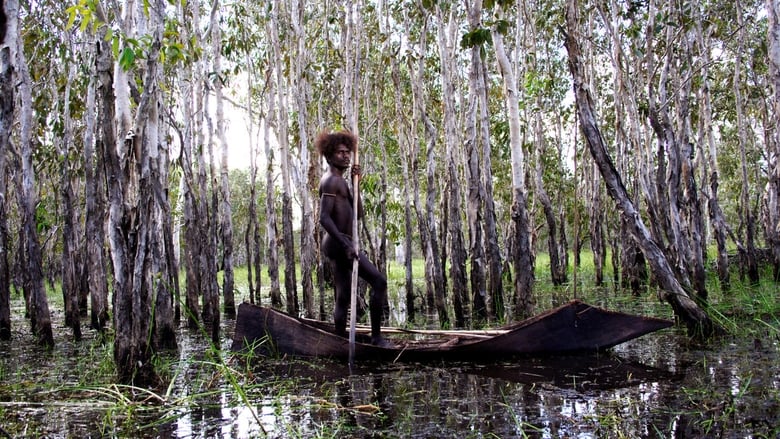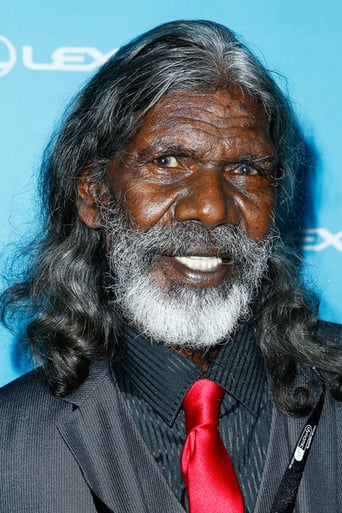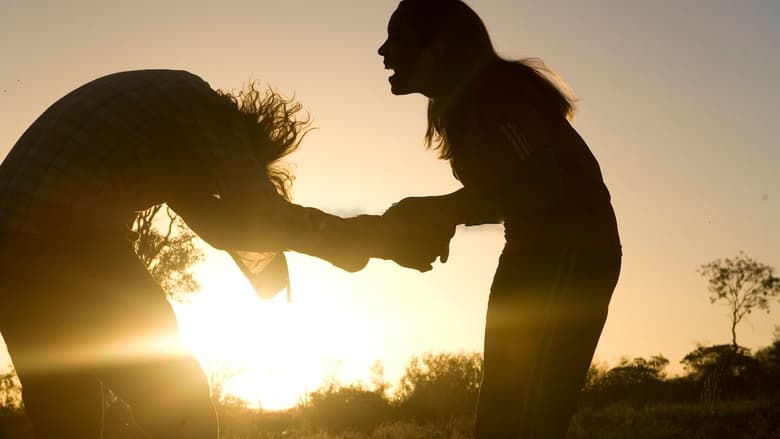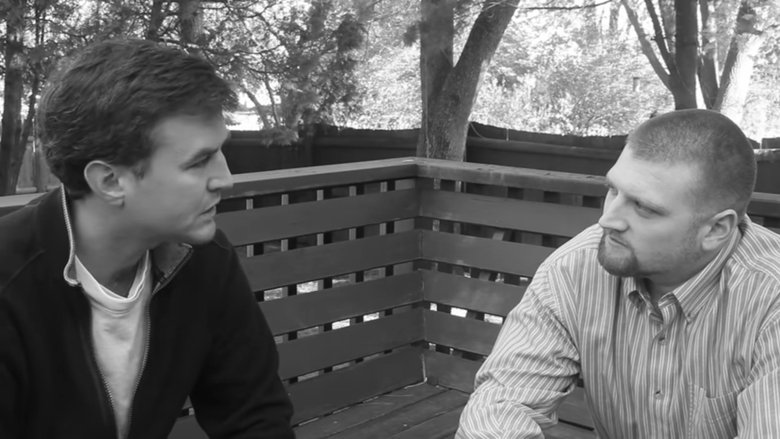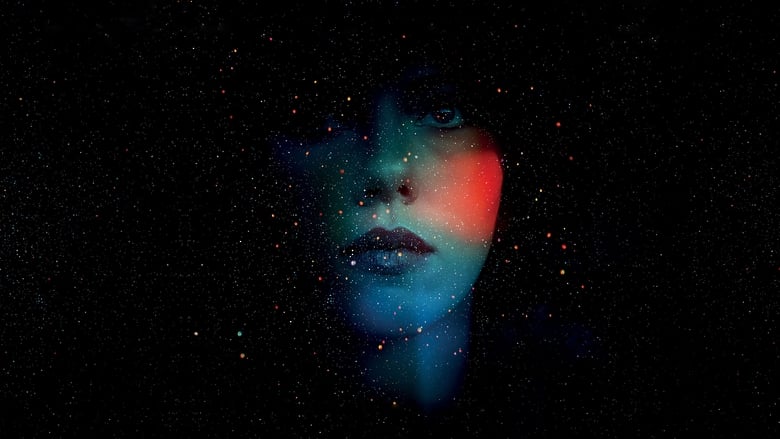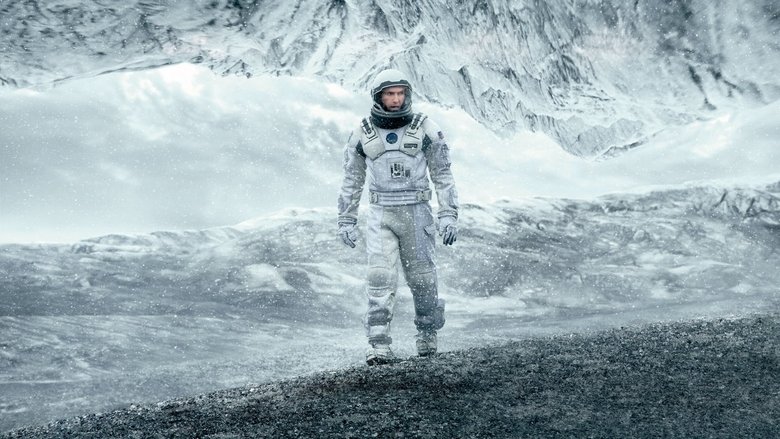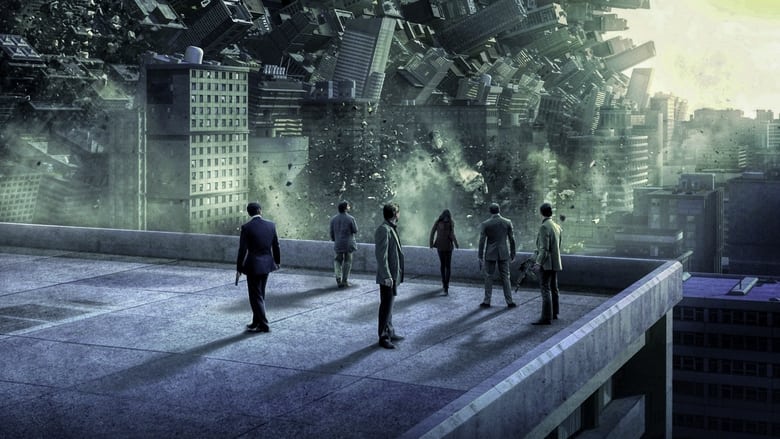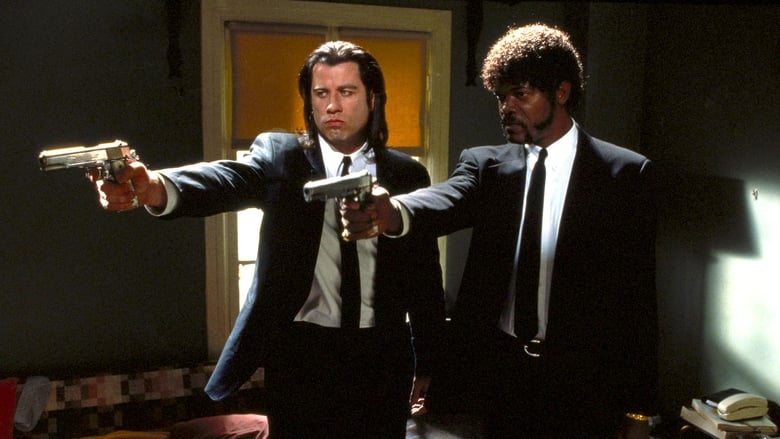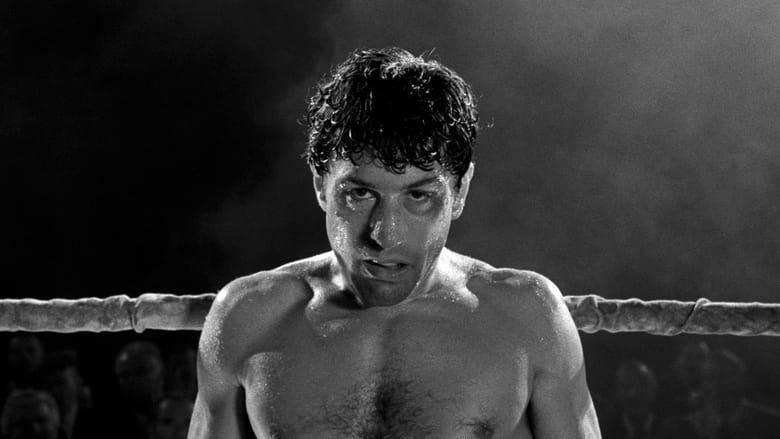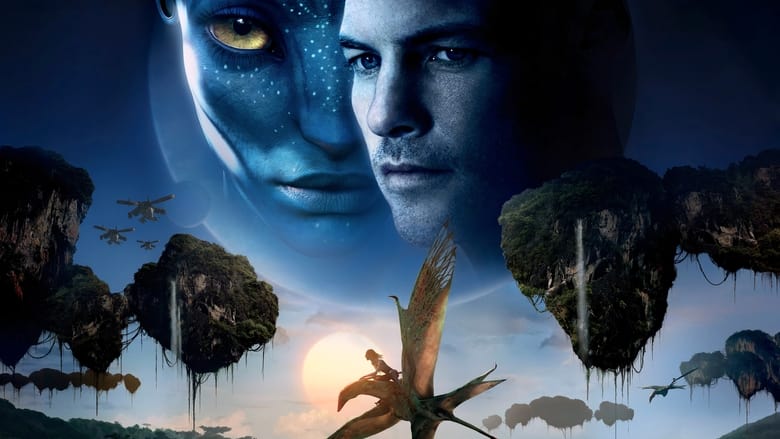A story within a story within a story. In Australia's Northern Territory, an Aboriginal narrator tells a story about his ancestors on a goose hunt. A youngster on the hunt is being tempted to adultery with his elder brother's wife, so an elder tells him a story from the mythical past about how evil can slip in and cause havoc unless prevented by virtue according to customary tribal law.


Similar titles
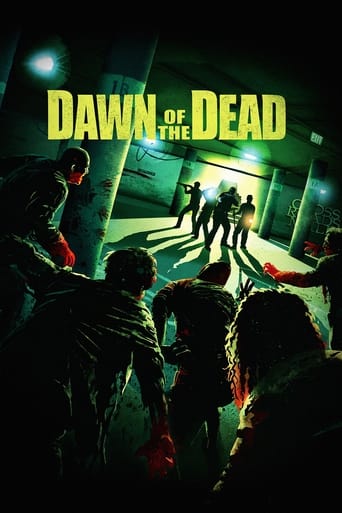



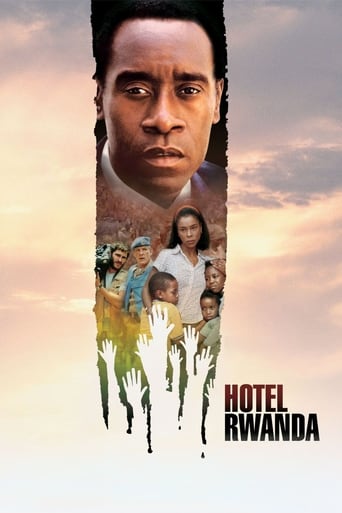
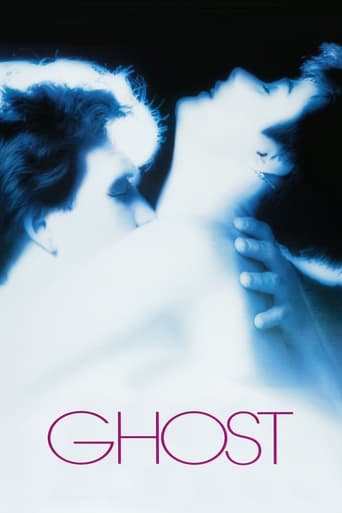
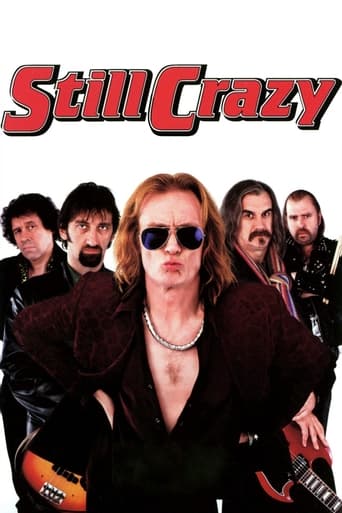

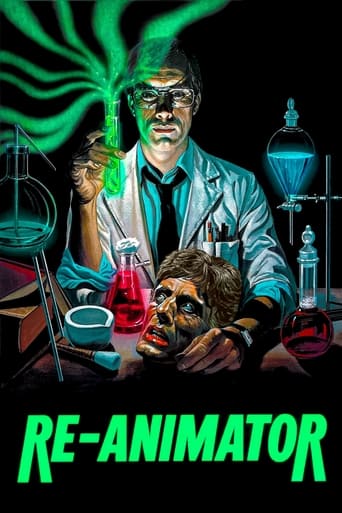
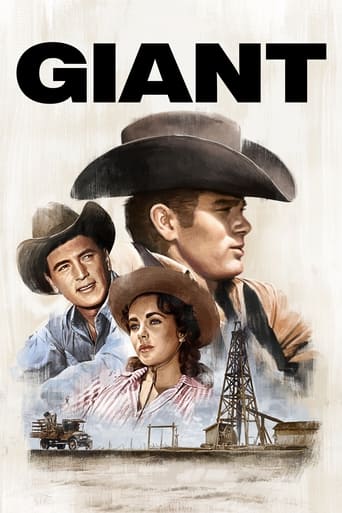
Reviews
For a country whose notion of Indigenous Aboriginal culture comes up to The Dreamtime and dot paintings, Ten Canoes might well serve as a lovely refresher course, never mind how Hollywood might react to it. Growing up I recall being fed healthily on these stories as part of an ever-enthusiastic brand of multicultural education, and relishing them because it was easy for even kids to imagine how the ancient storytellers had come to these conclusions by simply looking around them and rewinding. How the stars in the night sky are camp fires burning brightly to guide hunters home, how the rivers are water goannas larger than you or me could ever comprehend, or how the great emu losts its wings because of its own arrogance and pride (Icarus being just pipped on that one). Another tells the story of how the kangaroo was bestowed its pouch because of the kindness it showed towards Byamee, a god disguised as a troubled wombat. What these stories, and what Ten Canoes shows us, is that even as many millennia separate us, our inherent laws and practices are guided by a karmic belief of cause and effect, often with wry consequences. Fair is fair; the universe ensures that you will always get what is coming to you, and it isn't afraid to get creative. Who better to champion the oral traditions of the Indigenous Aborigines than David Gulpilil? He is without a doubt the most mainstream and well-known of the Aboriginal actors, and retains a delighted curiosity from his first ever screen- credit way back in Nicholas Roeg's masterpiece, Walkabout. In that he played a young boy on the eponymous rite of passage, who positively gurgled when asked to demonstrate his knack for finding water in barren desert, and channeled this fevour elsewhere in his mating dance. Gulpilil has lost none of that fresh-faced charm, and although we cannot see his grin, it is easily identifiable in his narration. It is not quite Attenborough; the storyteller observes with an all- seeing eye, but is not afraid (as we might suspect) to insert his own footnotes here and there, and sometimes chuckle along. Rolf de Heer alternates black-and-white and colour stock as if to mimic dusty old storybooks (if they had they kept them) being brought to life orally, and Gulpilil can't always bear to remain impartial. Which is how most of us like our stories told, with a dash of flavour and colour. de Heer uses the visual as a way of representing an age-old reverence for the land. The Aborigines were nomadic hunters and gatherers, never taking more than necessary, and ensuring that the land too could live and breath beneath the soles of their feet. The cinematography is almost sensual; the camera snakes steadily around tangles of bush and grass, like the hunter making his slow advance, or glides serenely, as if it was also balanced on the canoes the men themselves craft out of tree bark. The water's mirror must not break, the ever-constant buzz of the outback unable to be interrupted. At times it simply lingers, and we see how the landscape twitches, and shimmers in the heat. The story is in fact three stories within one another, of one narrator performing for the gathering around the camp fire, and another using a fable as way of caution. So there are thousands of years connecting the story strands, and the film decides to strengthen them using first and foremost humour, and through showing how it has not aged a day from the past. Fart and dick jokes are means of confronting the modern audience, to force a connection that has not been recognised until this moment. And then we see how their morality system has manifested from lifetimes of incidents and misunderstandings. This is a little further from our own comfort zone, a ritual of justice where spears are thrown until the guilty is wounded. So it is shocking when the conclusion, somehow, manages to make sense: "We've speared your man," says one tribe to another, who respond "who speared ours". Perhaps it is Byamee's way of pushing responsibility towards Yeeralparil, who makes the costly error of lusting after his brother's three wives, and through cruel fate, finds the pleasure turned into burden suddenly thrust onto him. We may not subscribe to the spear for a spear ideology that they practised long ago (indeed we have better method not available to them), but somehow we keep making the same mistakes, and punishment happens to chase us out eventually. And yes, we are still prone to laying around all day and eating honey, although we have made an efficient business out of it. The belly laughs when we are caught with sticky fingers still sound the same.
This story begins with an aerial flyover of Arnhem Land in northern Austalia. A narrator comes on saying that he is going to tell a story, his story. His story starts with the recounting of a tale about his ancestors of a few generations back who are making canoes to traverse a crocodile-filled swamp in search of goose eggs. Within that tale a wise older man is telling another, somewhat parallel, tale to his younger brother dating back many generations to "the ancients." In a clever plotting device the ancestor's tale is shown in black and white while the ancient's tale is shown in color. This technique has the dual effect of allowing director Rolf de Heer to duplicate scenes from black and white photographs taken in the area by an anthropologist in the 1930s (photographs that motivated the making of this film), as well as helping the viewer keep the stories straight.The cast consists of a few dozen modern day aboriginals playing the parts in the two stories. They try to capture the reality of the times portrayed, and you can believe that this was the way it could have been thousands of years ago for a tribe of early humans. The earlier Astralians have their own customs and language and the cast speaks in their native language, with English subtitles. I kept thinking of how the basic emotions driving the stories are still with us--fear, jealousy, lust, love, trust, distrust, pride, humor, courage, loyalty, honor. The culture presented is indeed not mine, but it is perfectly understandable. Sorcerers keep the tribe stirred up and mystified with special knowledge of "magic," just as modern religions do (with equal effectiveness). There are laws that must be obeyed, even if unwritten. The young men relish showing prowess in hunting and war making. A creator is deemed the prime mover. Marital relationships are not always harmonious, especially if polygamous. And so on. It appears that no matter how it manifests itself a culture will wrap itself around basic human emotions and desires. It would not be a stretch to recast these stories in a modern setting.The photography of the landscape is beautiful and sensuous; it contributes greatly to the stories by showing what an intimate relationship early peoples had with the land and its fauna.This movie helps us better appreciate where we came from and what we are.
Despite its exquisitely photographed and exotic locale, "Ten Canoes" is strictly for those who still need a bedtime story to help them fall asleep. Set in the Australian outback, this tale of life among the Aborigines is as beautiful to look at as it is tedious to sit through. As we watch a group of men building canoes, a wizened but droning narrator spins an ancient yarn about a stranger who wanders into a village, forever altering the lives of those who live there (interestingly, while the scenes in the past have been filmed in color, those set in the present are in black-and-white)."Ten Canoes" may have value as an anthropological study of sorts, but its desultory pacing and lack of compelling drama make it a very dull slog indeed for even the most adventurous of armchair-traveling moviegoers.
It's always good to see a truly unique film come out of Australian cinema, and, once again, Netherlands-born Australian director Rolf de Heer proves that he's probably the most exciting filmmaker working in the local industry at present. Along with first-time director Peter Djigirr, de Heer has produced an invaluable cultural document, telling a tale of Australian aboriginal life in the time long before Europeans ever arrived, which instantly sets it apart from most other works of Aborigine-related Australian cinema {such as 'Walkabout (1971)' and 'Rabbit-Proof Fence (2002)'}. 'Ten Canoes (2006)' is also unusual in that it is the first to be filmed entirely in an Indigenous Aboriginal language {though David Gulpilil's narration is available in both English and the language Yolŋu Matha, I chose the latter for the sake of authenticity}. Fortunately, the Australian Film Institute saw fit to reward the film with the highest honours at the 2006 AFI Awards, and I can't think of a more deserving recipient {sorry, 'Kenny'... }.The way in which the narrative of 'Ten Canoes' is structured is very clever, cutting between two time periods as though the narrator/storyteller (David Gulpilil) is simply passing on the ancestral history as his people have done for hundreds of generations and thousands of years. The more recent of the segments, and I use the term loosely, is filmed in black-and-white to evoke the atmosphere of the indigenous photographs taken by explorers in the early twentieth century {the name of the film itself is derived from a photograph of ten canoeists poling across the Arafura Swamp, taken by anthropologist Donald Thomson in 1936}. This segment is told in a straightforward, documentary-like manner, as a wizened Aborigine leader finds out that his younger brother, Dayindi (Jamie Gulpilil), covets the youngest of his three wives. During a coming-of-age, goose-hunting trip, the older brother tells Dayindi a story to teach him the consequences of jealousy. This story-within-a-story takes place years and years earlier still, not too long after the The Dreamtime, during which the patterns of life were laid down, and is presented to us in vibrant colour, making full use of the beautiful Northern Territory wilderness.This earlier tale recites the story of another young Aborigine, Yeeralparil (Jamie Gulpilil), who also desires the youngest of his older brother's three wives. This older brother, Ridjimiraril (Crusoe Kurddal, who speaks the Gunwinggu language for the film's entirety), is a brave and noble warrior, but demonstrates a lack of patience when his second wife goes missing, presumably kidnapped by a neighbouring tribe. While the black-and-white segments of the film have the tone of a historical documentary, the colour narrative has the fantastical mysticism of an old Dreamtime story, particularly evident in the Makaratta ("spear-throwing") ritual, and the Death Dance. Even though all the characters speak in their native language, there's also a surprising amount of humour to be found. The characters frequently immerse themselves in idle chit-chat and make jokes about flatulence and sex, suddenly bridging the thousand-year gap between ourselves and these ancient people, as we realise that perhaps we're not as dissimilar from these tribes as we had initially thought. In addition, the fat and lazy warrior with an addiction to honey (Richard Birrinbirrin) was absolutely hilarious.'Ten Canoes' tells a story with a simple moral, but it's the way the story is told that is singularly unique. Many have labelled the film as being particularly challenging, but I'm afraid I don't see what might be so difficult about it: though it is undoubtedly like nothing we have seen before, the two respective narratives are genuinely interesting and the characters are likable and relatable. One of the film's major themes concerns the circle of life each human begins his existence as a small fish lurking in the waterhole, and, following his death, he will return to the exact body of water from which he was taken. Likewise, each character in the film follows a cycle of his own. Rather than rushing into drastic actions and disturbing the balance, one must always be patient, for life will always follow a full-circle. And be careful what you wish for, because you might just get it.

